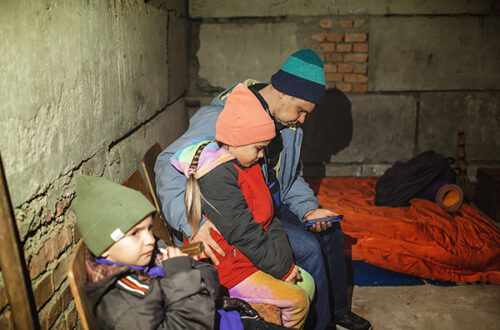
Watch Your Blood Pressure
Watch Your Blood Pressure
Watch Your Blood Pressure

13% of California’s maternal deaths are attributed to these hypertensive disorders, with symptoms that are sometimes missed, misdiagnosed, or masked by other illnesses
Preeclampsia, once called toxemia, is a high blood pressure related illness in pregnancy. As more is learned about preeclampsia, it is recognized as one part of a complex series of symptoms in a spectrum of hypertensive disorders of pregnancy. While high blood pressure is often the key to diagnosis, the addition of other symptoms can help indicate the severity of the disease.
Unfortunately, 13% of California’s maternal deaths are attributed to these hypertensive disorders, with symptoms that are sometimes missed, misdiagnosed, or masked by other illnesses. The California Maternal Quality Care Collaboration (CMQCC) is working to assist care providers in recognizing and treating preeclampsia and its related illnesses quickly and accurately.
Heartburn, headaches, shortness of breath, nausea, rib pain (in reality, the liver), and so many more common, pregnancy-related symptoms become suspect when coupled with rising blood pressure. When pregnant, it is important to communicate the presence of these common symptoms to care providers as it can help them see a bigger picture.
The CMQCC is helping care providers and others working with pregnant and postpartum families to institute a checklist to ensure a consistent response to potentially dangerous symptoms that can be easy to ignore. Unfortunately, women have historically been labeled as complainers, resulting in many women’s health issues being brushed off or ignored. (A quick online search for gender bias in healthcare will show the depth of the issue.) Women of color and those who are not cis-gender suffer these inequities even more, as evidenced by their higher maternal mortality rates.
Being ignored is not just frustrating, it can be dangerous. While the CMQCC toolkit gives providers information to help ensure all are evaluated for hypertensive related illnesses and appropriate treatment is implemented, it’s also important for families to understand the importance of their symptoms being heard and taken seriously.
Pregnant patients should be instructed about when to call with new symptoms, especially when there is also concern about blood pressure. A call to a care provider about a headache should not result in being told to simply take a couple of Tylenol; clear information should also be given about what to do if the headache doesn’t resolve. Not everyone who takes initial phone calls or sees patients in reception recognizes the urgency of some of some symptoms. This is especially true after the baby is born. In fact, the CMQCC toolkit has providers instruct at-risk patients to specifically say, “I am having symptoms of preeclampsia and my provider told me to call and ask to be seen right away when I experience these symptoms.”
Toolkit guidelines give specific direction on treatment when time is of the essence, indicating treatment after just 15 minutes of assessing certain symptoms.
Preeclampsia and its associated illnesses may seem like just high blood pressure, but often involve other organs such as the brain, lungs, heart, kidneys, and liver that can escalate quickly to life-threatening situations. Severe headache and/or visual disturbances should always be taken seriously as they can be a sign of impending stroke or seizure, and must always be assessed quickly; an appointment later is not appropriate, immediate care is indicated.
Hypertensive disorders of pregnancy are actually related to the implantation of the placenta and will generally resolve with the birth of the baby. This is why early delivery of the baby is often recommended. But, some cases will unexpectedly develop or worsen after delivery and can be easily missed in the typical overwhelm of the first days after birth.
Preeclampsia/hypertensive disorders of pregnancy can look like asthma, headache, gallbladder problems, acid reflux, and other illnesses. It may be up to the pregnant person or her family to alert care providers about the possibility of preeclampsia, if, for example, presenting to urgent care a few days after birth with symptoms such as wheezing or rib pain.
California is making progress in reducing maternal deaths with the work of the CMQCC and the toolkits provided for healthcare workers. When parents are also informed, they are able to better advocate for their care.
Midwives & other local resources Birthnet.org
California Maternal Quality Care Collaborative cmqcc.org


You May Also Like

Masking for a Friend
March 30, 2022
Annual Summit for the Planet
March 30, 2022

